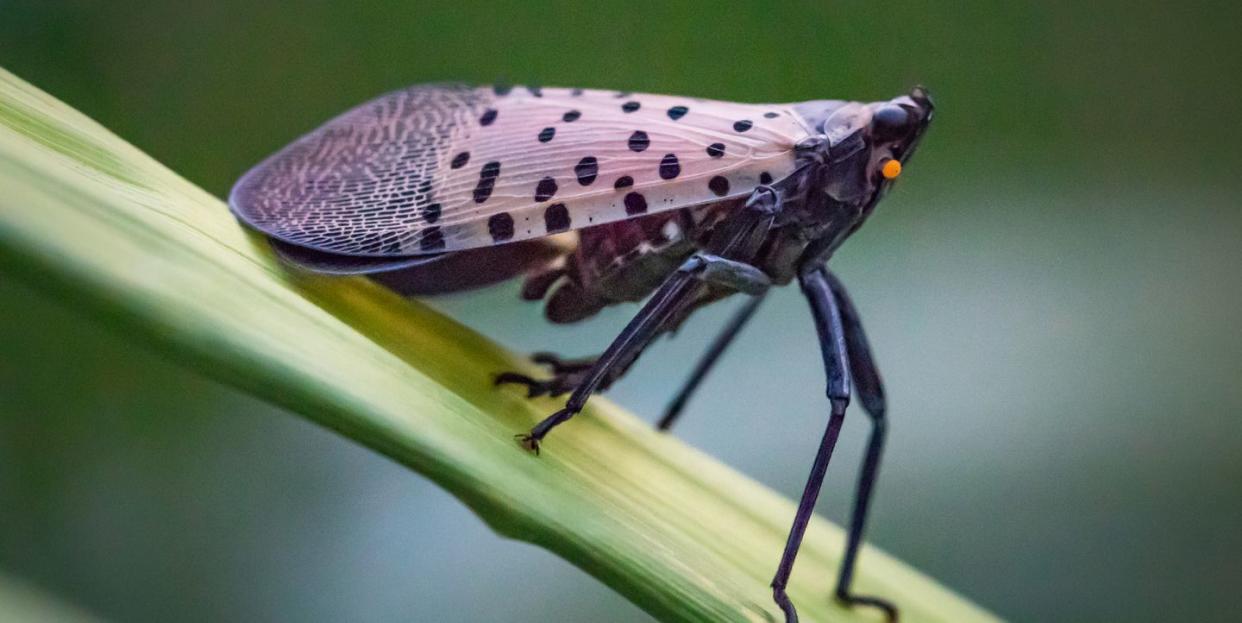An Invasive Spotted Lanternfly Has Placed Some East Coast Counties Under a New Quarantine

Move over murder hornets, there’s a new trending bug in town (although, arguably less terrifying). Instead of threatening the bee population, this one—the spotted lanternfly—poses a risk to the East Coast’s major crops, including, but not limited to maple trees, apple trees, grapevine, and hops.
According to the New York State Department of Agriculture, the winged insect was spotted on Staten Island on August 14. The same week, the New Jersey Department of Agriculture reported that eight counties were quarantined due to an area invasion.
What is a spotted lanternfly, exactly?
The spotted lanternfly is an exotic insect native to China and South Korea that is an “excellent hitchhiker,” per the state of New Jersey. They’re approximately one-inch long and half an inch wide at rest, and spread most vehemently through human activity, which is why the state implemented quarantines for specific counties: Warren, Hunterdon, Mercer, Burlington, Camden, Gloucester, Salem and Somerset. Residents are asked to thoroughly inspect their cars for the unwelcome passengers before traveling.
The bug was first identified in the United States in Pennsylvania in 2014, and is believed to have arrived on a cargo shipment. Since then, it has also been found in Maryland, Delaware, West Virginia, and Virginia.
Why is the spotted lanternfly so harmful?
The lanternfly feeds on more than 70 plant species, per New York’s Department of Agriculture, which causes the plants major stress. Additionally, it secretes a sticky “honeydew” which attracts other insects and molds that interfere with plant photosynthesis, which can stunt plant growth and ultimately, their harvest. The honeydew can also impact outdoor recreation due to the swarms of insects it attracts.
Is the spotted lanternfly dangerous to humans or pets?
The New Jersey Department of Agriculture says the bug is no threat to humans or animals, only plants.
What to do if you find a spotted lanternfly
New Jersey officials encourage residents to “destroy” the spotted lanternfly and/or its eggs if spotted, and report the spotting via email at Slf-plantindustry@ag.nj.gov or by calling 609-406-6943. The Tree of Heaven seems to be its preferred laying spot, and since surveying and treatments began in the state in 2018, more than 200,000 Trees of Heaven on almost 19,000 acres have been treated.
New York residents can report a sighting using the agriculture department’s online reporting tool. Additionally, residents should know the signs of a lanternfly infestation and be able to identify their eggs, as adults begin laying in September.
Signs of an infestation may include:
Sap oozing or weeping from open wounds on tree trunks, which appear wet and give off fermented odors.
One-inch-long egg masses that are brownish-gray, waxy and mud-like when new. Old egg masses are brown and scaly.
Massive honeydew build-up under plants, sometimes with black sooty mold developing.
If you see a spotted lanternfly somewhere other than New York or New Jersey, contact your state’s agriculture department. “It will take a combined effort to help keep this pest from spreading,” New Jersey Department of Agriculture secretary Douglas Fisher said in a statement.
Support from readers like you helps us do our best work. Go here to subscribe to Prevention and get 12 FREE gifts. And sign up for our FREE newsletter here for daily health, nutrition, and fitness advice.
You Might Also Like


